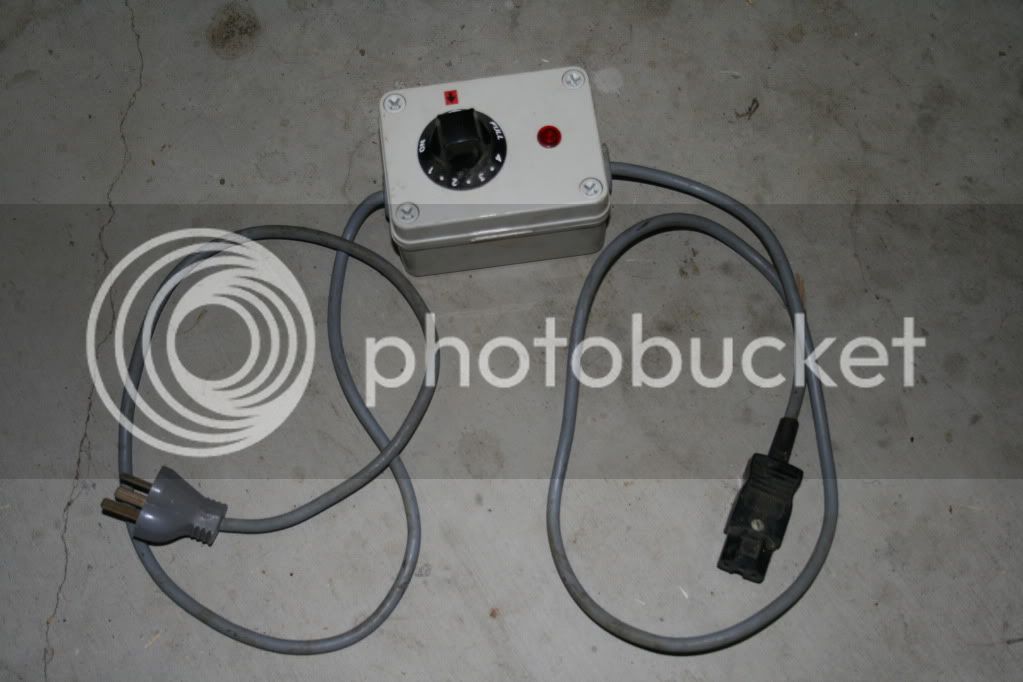ShredMaster
Well-Known Member
- Joined
- 6/7/11
- Messages
- 155
- Reaction score
- 0
I've managed to acquire one of these which is rigged up in a little control box with the leads.

I opened it up to see what it actually was and the knob is controlling a simmerstat. I just bought a 2200W element and am in the process of rigging it up to give me a boiler and was wondering whether to use this.
From the searches I did, there are really mixed opinions on whether they are good to use or not, as in, whether they are "bad" to use. It seems like a pretty neat idea having a knob to control my element, apparently simmerstats is how the common kitchen stove is controlled.
Are there any issues using one? Is it actually as cool as it seems to use one?

I opened it up to see what it actually was and the knob is controlling a simmerstat. I just bought a 2200W element and am in the process of rigging it up to give me a boiler and was wondering whether to use this.
From the searches I did, there are really mixed opinions on whether they are good to use or not, as in, whether they are "bad" to use. It seems like a pretty neat idea having a knob to control my element, apparently simmerstats is how the common kitchen stove is controlled.
Are there any issues using one? Is it actually as cool as it seems to use one?




